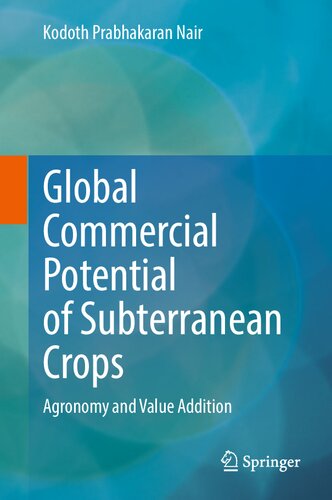

Most ebook files are in PDF format, so you can easily read them using various software such as Foxit Reader or directly on the Google Chrome browser.
Some ebook files are released by publishers in other formats such as .awz, .mobi, .epub, .fb2, etc. You may need to install specific software to read these formats on mobile/PC, such as Calibre.
Please read the tutorial at this link: https://ebookbell.com/faq
We offer FREE conversion to the popular formats you request; however, this may take some time. Therefore, right after payment, please email us, and we will try to provide the service as quickly as possible.
For some exceptional file formats or broken links (if any), please refrain from opening any disputes. Instead, email us first, and we will try to assist within a maximum of 6 hours.
EbookBell Team

4.7
86 reviewsTropical root and tuber crops form an important group of food crops for millions of people (about one-fifth of the world population), especially those living in the tropical and sub-tropical zones. Tuber crops are the third important food crops after cereals and grain legumes. The carbohydrates synthesized in the leaves and stored in the form of starch in the underground roots and tubers, which are not only for food, but also a raw material for several industries. Among the many tuber crops available, only a few have been domesticated and widely cultivated for edible and industrial purposes. This book addresses the principal issues connected with selected tuber and root crops, their origin, global distribution, cultivation details, and their global commercial potential, vis-à-vis the end products made out of them (value addition). Among the crops, sweet potato, cassava, yams, colocasia, west Indian arrowroot, asparagus, safed musli, Indian Bread root and gloria superba will be discussed.
From various projections, it is evident that by the year 2050 the world population will face a serious food shortage, if current trends in cereals consumption is taken intoaccount. That is why root and tuber crops assume great importance. Contrary to the high-fertility soils, which are a requirement for principal cereals like rice and wheat, root and tuber crops can grow quite well in poor soils, under varying climatic conditions.